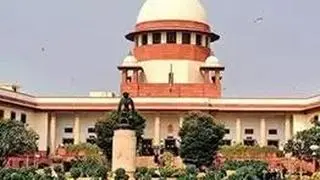With ‘individual insolvency’ now identified as IBBI’s next big reform area, the insolvency regulator has decided to appoint an external institution or an agency for undertaking a research study on individual indebtedness and insolvency.
This external agency — once selected by IBBI — will have a maximum of one year to complete the research report. Insolvency and Bankruptcy Board of India (IBBI) has invited Expression of Interest from institutions / organisations/ agencies to undertake the research study, sources said.
The research questions that the external agency may be asked to look at include the levels and category of personal debts that could be covered under the individual insolvency framework; whether lack of health insurance correlated with personal insolvency; does individual bankruptcy offer families a better financial future and whether the law as laid out in the Code, need to be revisited to ensure its better usage by individuals or alternatively whether the requirements can be met through changes in the regulations framed under the Code.
Another interesting research question that the external agency may be asked to look at is whether current policy of direct subsidy transfer and other direct benefits in terms of crop insurance, personal medical facilities and houses under Prime Minister Awas Yojana is helping in better debt management of individuals.
It may be recalled that currently Part III of the IBC — dealing with individual insolvency — is yet to be enforced, other than provisions related to personal guarantors to corporate debtors.
Part III of the Code provides for three processes for individual insolvency resolution, on default of a threshold amount. These three processes are Fresh Start Process; Insolvency Resolution Process and Bankruptcy process.
Code vs Erstwhile framework
Currently, the Presidency Towns Insolvency Act 1909 and the Provisional Insolvency Act, 1920 are in force. The IBC has made several improvements over these two enactments.
With its focus on rehabilitation of the debtor as opposed adjudging him as insolvent, the Code: (a) provides an objective trigger for initiation of insolvency resolution process instead of relying on the commission of an ‘act of insolvency’; (b) mandates a moratorium which provides a breathing space for the debtor and creditors to negotiate a repayment plan; (c) uses independent and qualified professionals to assist the stakeholders and the Adjudicating Authority (AA) in conduct of processes; (d) prescribes a linear process, in which bankruptcy typically follows the failure of the insolvency resolution process; (e) enables automatic discharge instead of requiring that discharge be granted by the AA on the satisfaction that the insolvent has conducted himself well in the run-up to and during insolvency; (f) provides a more comprehensive regime, including a debt relief in the form of ‘fresh start’, and keeps certain assets of the debtor beyond the reach of creditors for the subsistence of the debtor.








Comments
Comments have to be in English, and in full sentences. They cannot be abusive or personal. Please abide by our community guidelines for posting your comments.
We have migrated to a new commenting platform. If you are already a registered user of TheHindu Businessline and logged in, you may continue to engage with our articles. If you do not have an account please register and login to post comments. Users can access their older comments by logging into their accounts on Vuukle.